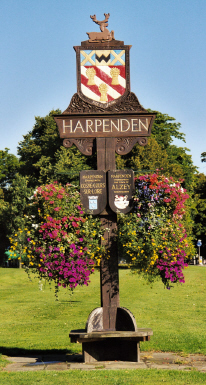Special Interest and Study Day report
-
Report on the Study Day Visit to Nazeing - 2015
On March 19th, 46 members and guests made their own way by car to the Nazeing Glass Factory near Broxbourne for their Hot Glass Study Day.
After coffee the introduction was given by the owner Stephen Pollock-Hill and then he introduced Andy McConnell, the BBC Antiques Roadshow glass expert. Andy started buying and selling antiques when he was 14 and he is now a specialised glass dealer, running Britain’s largest antique and vintage glass shop in his home town of Rye in East Sussex.

Stephen gave us a short history of the factory from 1928 when the owners moved from Vauxhall and built a furnace in a goat shed. To start they made coloured decorative vases and bowls and items such as lead crystal cut glasses for the Navy and RAF; coloured glass was easier than plain.
Throughout subsequent years they have had to meet the need for all types of commercial items; from the 1950's to 80's they made millions of advertising ashtrays which were soon found all over the world. Next they were making a very popular unique blue glass required for bowls, vases and glasses for the City of Bristol Museum. The award-winning Pullman glasses provided work for 30 years. Special glasses for The Ritz and the Dorchester and bottles (e.g Glenfiddich whisky) have been commissioned by companies such as BA for use on Concorde.
Nearly all the stem glassware is now imported so Nazeing concentrates on industrial glass components. Typical of the products made are bulkheads, well glasses, marine & ship Nearly all the stem glassware is now imported so Nazeing concentrates on industrial glass components. lighting, aircraft and airport runway lenses, exterior light fittings, laboratory glass, nosing glasses, reproduction bottles and glasses.



In small groups we toured the factory which had closed for the day and was specially set up to demonstrate the different processes used to make specific items. This starts with the raw materials sand, soda ash and limestone together with smaller amounts of other chemicals needed for different glasses. These are melted in a furnace overnight. It can be continuously alight for 10 years and holds the over ½ tonne of glass needed for the next day's production.
Making an apple paperweight





Shaping the bottom Shaping the top Ready for finishing Adding the leaf Finished and cooling
They can blow, press and spin glass, all very skilful processes. There is much skill in cooling the resulting object which is put on a conveyor belt inside a cooling oven to avoid internal strains in the glass.


Using a mould A nearly finished vase
Their museum has hundreds of examples of all glass manufacturers such as Stewart, and Dartington and out-of-fashion cut lead crystal. The factory shop has a very enticing array of glassware, few of us left empty-handed!
Everyone agreed we felt it was a privilege to have been in their factory all day and to have seen so many aspects of handmade glass. It was a great day, really interesting, entertaining and enjoyable. The people we met there were without exception, welcoming and friendly.
Mike and Cynthia Hayhurst March 2015

